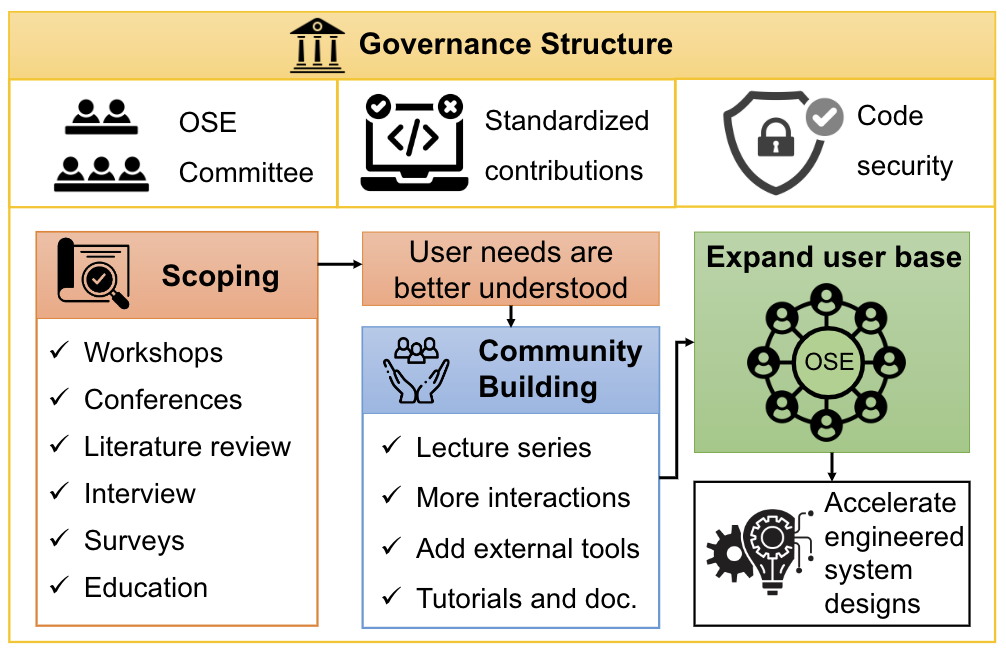POSE: Phase I: Open Source Ecosystem for Large-scale Multidisciplinary Design Optimization (NSF-TI-POSE. 7/2025 to 6/2026)
This project is funded by the Pathways to Enable Open-Source Ecosystems (POSE) program within the TI Division of NSF. [Project website]
This Pathways to Enable Open-Source Ecosystems (POSE) project create an open-source community that will support engineering design optimization software. Complex engineered systems such as hypersonic missile interception systems, next-generation aircraft and other vehicles, and energy grid infrastructure are essential for the security and prosperity of the United States. However, designing these and other systems is challenging. Complex engineered systems have many options to test and possible configurations to evaluate before finding the best solutions. Traditionally, this is done manually, and engineers often rely on their intuition in making designs, resulting in slower progress. Design automation tools address this problem by enabling engineers to quickly and automatically find optimum solutions. DAFoam is a powerful open-source design automation tool that has been applied to problems in aircraft, automobile, turbine, ship, and heat exchanger design. This project will enable DAFoam to expand its user base and allow more researchers, students, and engineers to benefit from design optimization technology. DAFoam cultivates a community-based governance structure for project decision making, supports and grows a vibrant and collaborative user community, and develops comprehensive training resources for new users. This POSE project supports workforce development in design science and engineering, promotes collaboration across academia and industry, and allows a better understanding of the complex design trade-offs in complex engineered systems.
This POSE project aims to transition a multidisciplinary design optimization tool (DAFoam) into an ecosystem that can expand its user base across many engineering disciplines in a self-sustainable manner. First, this project will conduct comprehensive scoping activities to deepen the understanding of user needs. The activities include hosting DAFoam conferences and workshops to collect feedback, engaging with potential users at various technical conferences, launching a literature review campaign to identify unmet needs, and interviewing research and education users. This team will cultivate a vibrant user community by creating live training courses, fostering an interactive user forum, collaborating with external open-source communities, and creating comprehensive documentation and tutorials. Finally, this project establishes a self-sustainable governance structure by forming the DAFoam ecosystem committee and standardizing the workflow for new code contributions, robustness tests, and security checks. The DAFoam ecosystem will significantly facilitate design space exploration, reduce the design cycle time, and accelerate the development and deployment of innovative engineered systems. Furthermore, detailed analyses of DAFoam-optimized designs can reveal new physics and mechanisms in emerging systems, which would otherwise be hard to obtain solely by human intuition.
